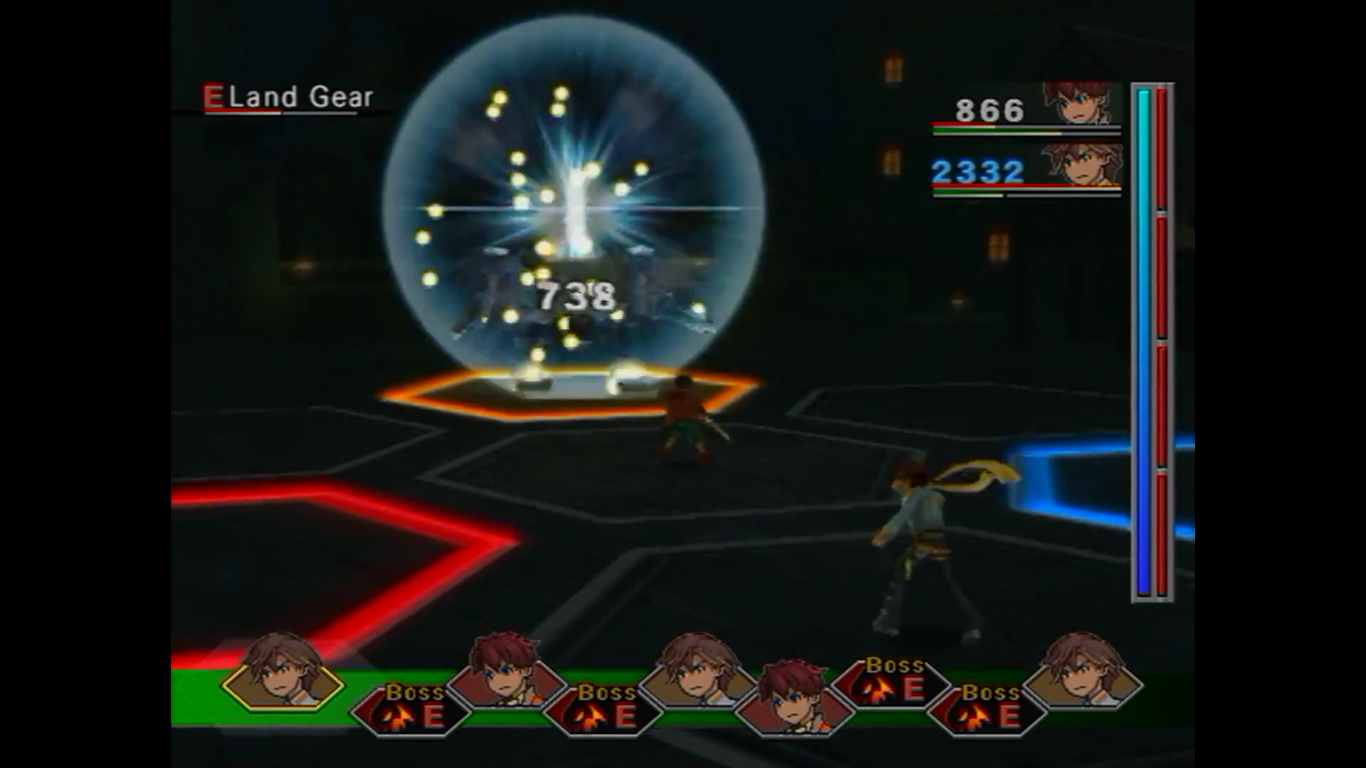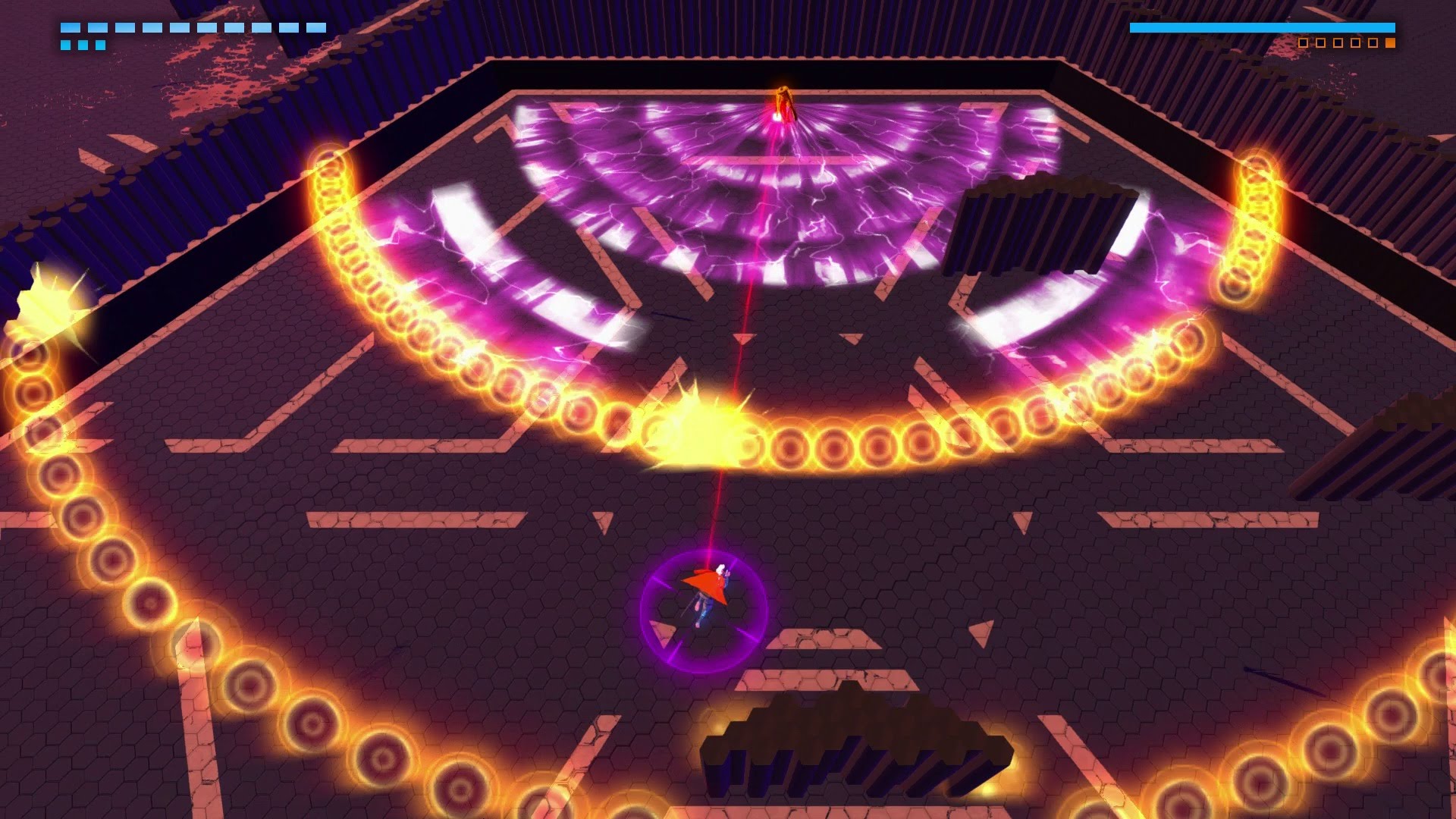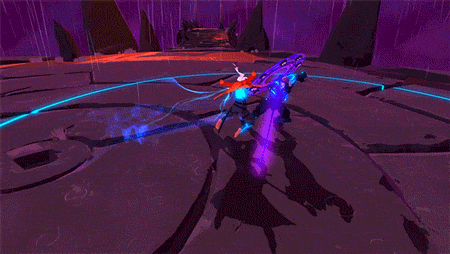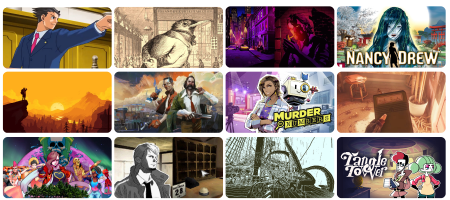Diamonds in the Rough
For every great game that releases to fanfare and acclaim, there is another that is underrated or overlooked. As a seasoned backlogger, I take great pride in reflecting upon the games I’ve played and honoring those that never received the praise they deserved. The following five games are experiences that may have been underappreciated when they released, but shouldn’t be missed.
While the majority of games on this list reviewed well, garnering at least generally favorable reviews on Metacritic, nearly all were shortchanged in terms of sales, popularity, or critical perception. The next time you enter a Best Buy or surf Amazon, keep an eye out for them; they might surprise you!
Now, on to the list!
Infamous: Second Son
Platform: PlayStation 4
Developer: Sucker Punch Productions
Publisher: Sony Computer Entertainment
Year Released: 2014
Metacritic: 80

The first game in the Infamous series to release on PS4, Infamous: Second Son marked a departure for the franchise. Gone was the stoic character of Cole MacGrath, instead replaced by spunky and edgy Delsin Rowe, voiced by none other than the ever-popular Troy Baker. With a new character came a unique story and subtitle, as well as a change in setting: the city of Seattle. Furthermore, with the transition to new hardware came a powerful, cutting-edge engine and the promise of unprecedented gameplay mechanics.
Perhaps as a result of all these changes, players and reviewers were skittish as they delved into the world of Infamous: Second Son. Common complaints included critiques that Delsin was a weak character compared to Cole, or that the heavy moral choices found in Infamous and Infamous 2 were less consequential in the reboot. In short, Infamous: Second Son just didn’t seem to differentiate itself enough from its precursors.
I played through Second Son twice: once on normal difficulty while playing as good Delsin, and the second on hard while being evil. Along the way, I completed all side missions and retrieved all collectibles, gaining a Platinum Trophy after about 25 hours of time between the two playthroughs, and had a blast doing so. As someone who didn’t connect with the characters of the original two games, Delsin and his brother feel like a breath of fresh air. Infamous: Second Son isn’t afraid to set a lighter tone for its story and world, and the result is a gripping narrative with interesting, nuanced characters that I cared for throughout its run-time. In fact, I’d even argue that this levity helped to make some of the more serious moments later on all the more engaging and, dare I say, tragic.
Tying this brilliant narrative together is combat and city-traversal that feels vastly superior to the gameplay found in previous Infamous games. Sucker Punch did a fantastic job designing smoke and neon powers that not only are satisfying to use, but look fantastic thanks to the added horsepower of the PS4 hardware. Whether sifting through vents during combat in order to get the jump on an enemy soldier, or running up the sides of a skyscraper at lighting speed to reach a nearby collectible, I always felt empowered as Delsin, and relished the chance to put my skills to the test during some of the game’s more challenging moments.
The end result is an Infamous game that truly makes the player feel like a superhero, all the while being charming, endearing and absolutely stunning to look at. Not only is it the best game in the series; it’s one of the best games to-date on PS4.
Mirror’s Edge
Platforms: Xbox 360, PlayStation 3, PC
Developer: EA DICE
Publisher: Electronic Arts
Year Released: 2008
Metacritic: 79 (360/PS3)

During a year where the vast majority of games released were either first or third person shooters, Mirror’s Edge stood out from the competition. While Call of Duty: World at War, Far Cry 2, and Left 4 Dead were all fantastic games in their own right, Mirror’s Edge felt different in its staunch commitment to providing a genre of game that players had never experienced before. A first-person game with a focus on movement, speed, and parkour, Mirror’s Edge actively encouraged players to navigate environments full of enemies, armed with just their legs and their wits, in order to get from point A to B as quickly as possible. While other games that year showcased dark, dreary, war-torn landscapes, the city of Mirror’s Edge was clean and sterile, a utopia on the surface that hides its true dystopian colors under a beautiful veneer of vibrant hues.
While the story of Mirror’s Edge is ultimately forgettable, the crux of the game is its fast and fluid parkour system. String together various movements in order to maintain your current speed while simultaneously figuring out how to get from one rooftop to another. Fail to time a roll or jump correctly, and you’ll slow your momentum, forcing you to restart your string again. This duality of well-timed button presses and sensory awareness gives Mirror’s Edge a sense of rhythm and resourcefulness that is unlike any game I’ve ever played. Although the learning curve is steep, those who master the game’s systems are rewarded with a gratifying cadence of movement not unlike a 100% run in Guitar Hero or a perfect KO in Street Fighter. And while hand-to-hand combat and gun shooting are present in the game (and have taken the brunt of complaints lobbed at the game), make no mistake: The focus here is on mobility. In Mirror’s Edge, your surroundings are both your greatest ally and your greatest enemy.
Capping off the experience are Mirror’s Edge’s various “Time Trials”: challenges that task the player with completing sections of levels from the main campaign in as short of a time as possible. While the main game is on the short side, clocking in at around 6 hours on normal difficulty, Time Trials help to add extra value to the experience while rewarding those willing to master each level’s intricacies and shortcuts in pursuit of a top spot on the leaderboards.
Taken at face value, Mirror’s Edge may be seen as a game that doesn’t fit the mold, and that’s perfectly fine. Mirror’s Edge doesn’t cater to the average first-person shooter fan, and is better for it.
Wild Arms 4
Platform: PlayStation 2
Developer: Media.Vision
Publisher: Xseed Games (NA)
Year Released: 2005
Metacritic: 69

The only game on this list to be considered “Mixed or average” by Metacritic, Wild Arms 4 was overlooked by critics and fans alike. I saw this game in a GameStop bargain bin a few years after it came out, and as a fan of the previous game in the series, Wild Arms 3, I picked it up without hesitation.
When I first booted up Wild Arms 4, I didn’t know what to expect other than a western-themed JRPG where people fight using guns called “Arms.” Turns out, Wild Arms 4 is so much more than that. While the graphics are certainly dated, even by 2006 standards, the game featured a unique battle system known as the HEX system. Prior to Wild Arms 4, battles in the series took place in the form of tried-and-true turn-based encounters. In the fourth entry of the series, this was reformed into what can only be considered a marriage of turn-based and strategy RPGs.
Players fight enemies on a grid of seven hexagons, where positioning plays a crucial role in success or failure. Certain player and enemy attacks may deal damage in a straight line, while others may deal area-of-effect damage to all adjacent nodes. Additionally, by grouping members of the party together on the same hexagon, players are able to unleash devastating co-operative attacks. However, these moves leave the party vulnerable, as enemy attacks to the hexagon will damage everyone standing there at the time. This duality between offensive and defensive positioning is at the heart of Wild Arms 4’s combat, and it excels thanks to this delicate balancing act.
Wild Arms 4 also includes what I’d consider a rarity among Japanese RPGs, let alone RPGs of any denomination: platforming. The game ditches the concept of a world map; instead, players navigate from town to town via a seamless, linear field, à la Final Fantasy X. Making this feature stand out are transitions from the traditional overhead viewpoint to that of a 2.5D side-scroller. From deserts to fire caverns, players are oftentimes tasked with platforming across this 2.5D plane using a mix of sliding and jumping in order to progress. Puzzles are also integrated into these segments, and while both the platforming and puzzles are on the easy side, they help to provide a nice change of pace from typical JRPG moments like battling enemies or talking to NPCs.
On top of it all, Wild Arms 4 has a killer story with characters that develop in meaningful ways. Near the end of the game’s 30- to 40-hour run, one scene left me particularly emotional, a strong accent to the game’s main theme of growing up. While most JRPGs in recent memory tend to botch coming-of-age tales and riddle them with clichés, Wild Arms 4 tells its story with confidence and grace. Plus, the game has a bad-ass opening theme.
Furi
Platforms: Xbox One, Playstation 4, PC
Developer: The Game Bakers
Publisher: The Game Bakers
Year Released: 2016
Metacritic: 77 (PS4)

2016 was an incredible year for games. Titles like Uncharted 4: A Thief’s End, Overwatch, and Inside were released to universal acclaim, while even divisive games like The Witness and Doom provided memorable experiences for gamers around the world. Yet, among this crowded list of wonderful games, there is one that was underappreciated above all others: Furi.
Released for free on PS4 as part of the PlayStation Plus lineup for July, Furi should have been the next Rocket League-caliber hit on the platform. You play as a mysterious swordsman (designed by the one and only Takashi Okazaki, of Afro Samurai fame) trapped in a prison, fighting to break out and regain his freedom. In order to escape, the swordsman must defeat a series of increasingly challenging gatekeepers who each guard a level of the prison. Each time you defeat a boss, you descend farther into the prison and get closer to not only your freedom, but to those who’d sacrifice their lives to keep you locked up.
Furi’s premise, albeit simple, lends itself to what ends up becoming an incredible story. By the end of the game’s 6- to 7-hour campaign, I was left questioning my character’s motivations for breaking out of prison, as well as what had initially put him behind bars in the first place. There is a surprising amount of lore and backstories in Furi, and piecing all the pieces of the puzzle together makes for an extremely satisfying conclusion to the game’s events. The credits sequence in and of itself is a moment I will never forget in all my years of gaming.
Even still, Furi’s bread and butter lies in its gameplay. Battles play out as 1-vs-1 melees that mix intimate beat em’ up sword-fighting with longer-ranged bullet hell mechanics. Mastering Furi’s combat requires fast hands and sharp eyes, as players face off against one of the many strong opponents that lie in wait. Dodging and parrying is essential to survival, and a mistimed sword slash could mean the difference between life and death.
Fights are frenetic, colorful, and always exciting. I mean, just look at these gameplay GIFs.




Battles are also extremely difficult, but I always had a blast honing my reflexes and learning the various patterns of each boss, not unlike games like Dark Souls or Mega Man. While critics had chastised the game for being too hard, I am convinced that those frustrated by controls or difficulty were those who had to complete the game by a strict deadline. From my experiences, controls were always responsive and immediate. I always felt in control of my character, and upon dying, never blamed the game.
There is certainly a trial-and-error period to each boss fight in Furi, and I’d be lying if I said there wasn’t. Quick deaths are commonplace when encountering a new phase you’ve never seen before of a certain boss, and the desire to label the game as “unfair” might certainly spring up from time to time. However, this is part of the intricate design of Furi. You’re supposed to fail before you can succeed, and the moment you accept that fact, the sooner you can relish every moment in Furi, from death to a killing blow.
Hotel Dusk: Room 215
Platform: Nintendo DS
Developer: Cing
Publisher: Nintendo
Year Released: 2007
Metacritic: 78

If there is one game on this list I implore people to check out, it’s Hotel Dusk. Released during arguably the greatest year in gaming history, 2007, Hotel Dusk is a fantastic game that was unfortunately doomed to fail. A visual novel developed exclusively for the Nintendo DS, Hotel Dusk is the definition of niche. Add to this the constant flow of bigger, higher-profile games that year like Call of Duty 4: Modern Warfare and Halo 3, and it isn’t hard to see why Hotel Dusk was a flop from a sales perspective (and why its now-defunct developer, Cing, went bankrupt in 2010).
Hotel Dusk tells the story of Kyle Hyde, a former police officer who quits the force after being forced to shoot his rogue ex-partner, Bradley. Three years after the shooting, Hyde learns that Bradley is alive, and recently stayed at a place called Hotel Dusk. With only a name and an address, Hyde takes it upon himself to investigate why Bradley went rogue, as well as what he’d been doing during the three years after his “death.”
The story of Hotel Dusk is the main attraction of this game. As Hyde, players navigate Hotel Dusk over a period of 24 hours, talking to the various staff and guests who work and stay there during the game’s events. What starts off as an innocuous visit soon turns into a story of crime, murder, and redemption. Without giving away too much of its narrative, Hotel Dusk is an exceptional story that kept me guessing from start to finish. And while the game’s plodding pace might frustrate some, those who are patient enough to see it through will be rewarded with one of the best narratives I’ve ever experienced in gaming.
A unique feature of Hotel Dusk is its storybook format. Players hold the DS sideways to experience the game’s dual-screened story, something that had only been done before by the Brain Age and Meteos series as well as a few niche games that never left Japan. Doing so places Hyde’s position on the left screen, as well as a visual representation of the hotel on the right screen. Conversations also take place in this format, with characters taking up either side of the handheld. The result is an experience that feels unique, and an opportunity to use both of the Dual Screens to their fullest. Since Hotel Dusk has a boatload of dialogue, the ability to read it in such a dynamic matter goes a long way towards nailing the game’s sense of place and purpose.
Adding to the atmosphere of Hotel Dusk is its fantastic soundtrack. While its tracks aren’t orchestrated (and would have likely gone to waste given the DS’s tinny speakers), the 36 tracks that play throughout the game more than make up for this through their charm. From catchy elevator-music tunes like “Monochrome” and “Straight Chaser” or character pieces like “Easy Feeling” for the sleazy Louis, to melodic ballads like “Violet Sky” and “The Last Sleep,” Hotel Dusk’s music showcases a wide variety of emotions across the game’s lengthy 20-hour story. The jazzy, noir-inspired soundtrack is the perfect complement for the gripping narrative, and helps give each character in the game’s diverse roster a personality that feels distinct.
For those of you who crave an exciting mystery or thriller, if Hotel Dusk’s four-minute introduction doesn’t stoke your interest, I don’t know what will.
What are some of your most underappreciated games? Let us know in the comments below!
Interested in reading more on Hotel Dusk? Check out my list of six franchises Nintendo needs to resurrect on Switch.
David is the founder of The Punished Backlog. He has a problem finishing games he starts.
Just beat: Donkey Kong Bananza.
Working on: Hollow Knight: Silksong.
Can't wait for: Metroid Prime 4: Beyond.
Follow David on Twitter at @David_Silbert to keep up to date with all things The Punished Backlog.










